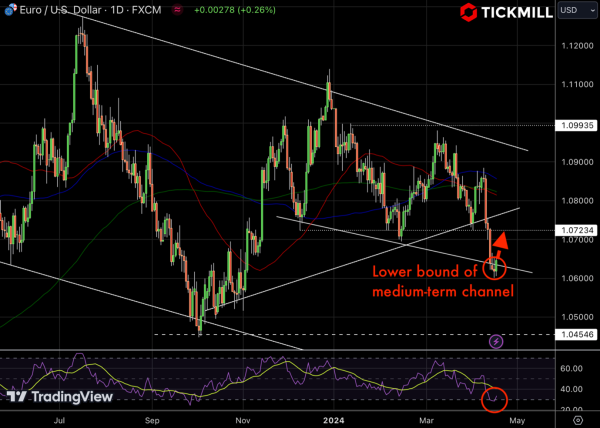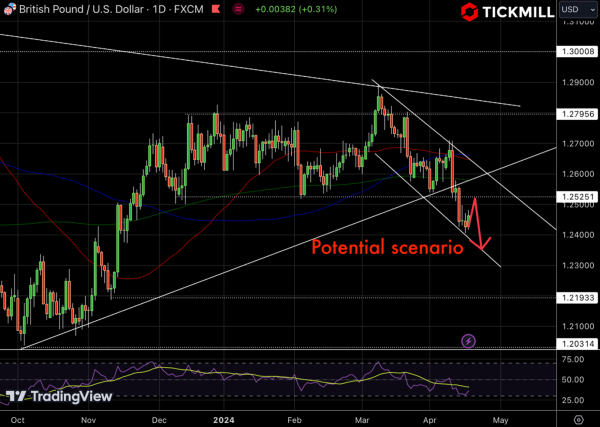Euro and Pound React to Inflation Data: What Lies Ahead?
Inflation data releases from both the Eurozone and the United Kingdom spurred the recovery of the Euro and the Pound Sterling on Wednesday. Let's delve into the implications of these figures and the potential trajectories for these currencies.
Eurozone Inflation
EURUSD bounced off multi-week lows following the release of the final Harmonized Index of Consumer Prices (HICP) for March. With figures aligning closely with initial estimates, the year-on-year HICP stood at 2.4%, slightly lower than February's 2.6%. Similarly, the Core HICP, which excludes volatile components, maintained a YoY increase of 2.9%, in line with expectations.
The consistency in the final estimates may have tempered the increasingly dovish sentiment surrounding ECB interest rate expectations. Market sentiment had been leaning towards a rate cut in June, as hinted by ECB President Christine Lagarde, particularly in response to geopolitical tensions affecting oil prices.
Despite the prevailing downtrend in the EUR/USD pair, signaled by trading below key moving averages and forming lower lows and lower highs, the Relative Strength Index (RSI) has entered oversold territory (below 30 points) on the daily timeframe. Fresh demand near the lower bound of the medium-term channel could also play the role in the rebound. Renewed buying activity signal a potential upward correction in the pair, possibly towards the 1.07 level, prompting short-term sellers to exercise caution:

The outcome of speeches by key ECB officials, including Lagarde herself, may further sway market sentiment and influence the pair's volatility in the near term.
UK Inflation and Employment Data
Conversely, the Pound Sterling (GBP) showcased resilience in early New York trading, buoyed by a robust report from the UK's Office for National Statistics (ONS). March's Consumer Price Index (CPI) exceeded economists' expectations, albeit with a softer growth rate compared to February.
Annual core CPI, a crucial metric for the Bank of England's (BoE) policy decisions, surpassed forecasts at 4.2%, although it notably decelerated from the previous month's reading of 4.5%. This moderation suggests that the BoE's proactive stance on interest rates has been effective in curbing price pressures.
Despite concerns over a cooling job market, highlighted by a sharp rise in the unemployment rate and a significant decline in employment figures for the three months ending February, speculation persists regarding the BoE's future monetary policy. The unexpected resilience in inflation data may prolong expectations for interest rate cuts, potentially starting in November.
Both the Euro and the Pound have been subject to fluctuations driven by inflation and employment data releases. While the Euro faces pressures amid dovish sentiments and geopolitical concerns, the Pound's resilience reflects the efficacy of the BoE's policy measures in managing inflationary pressures.
GBPUSD appears to be primed for a short-term rebound however fundamental headwinds, such as signs of increased labor market weakness and easing inflation pressures will likely help sell side of the market to hold their grip on the pair:
